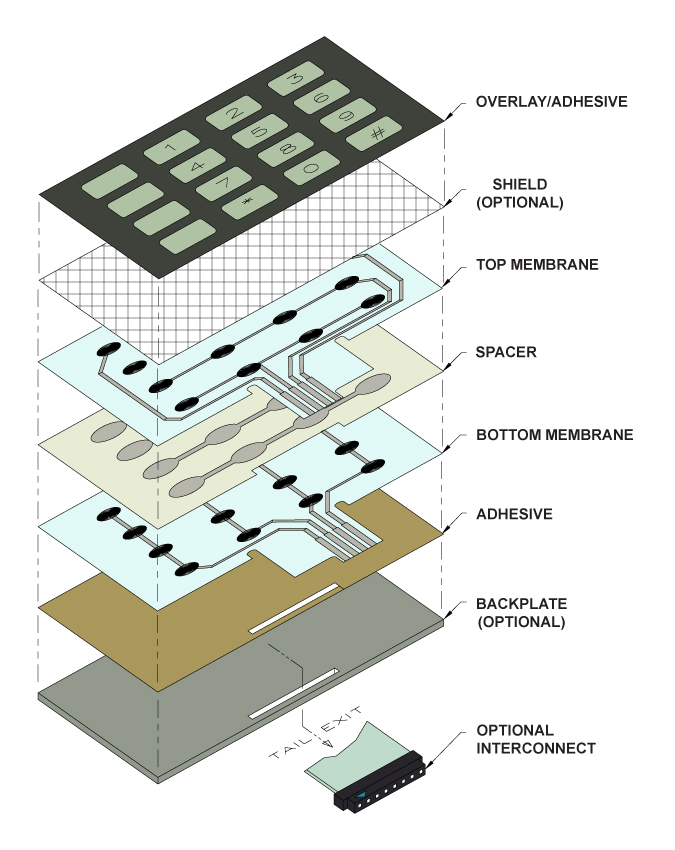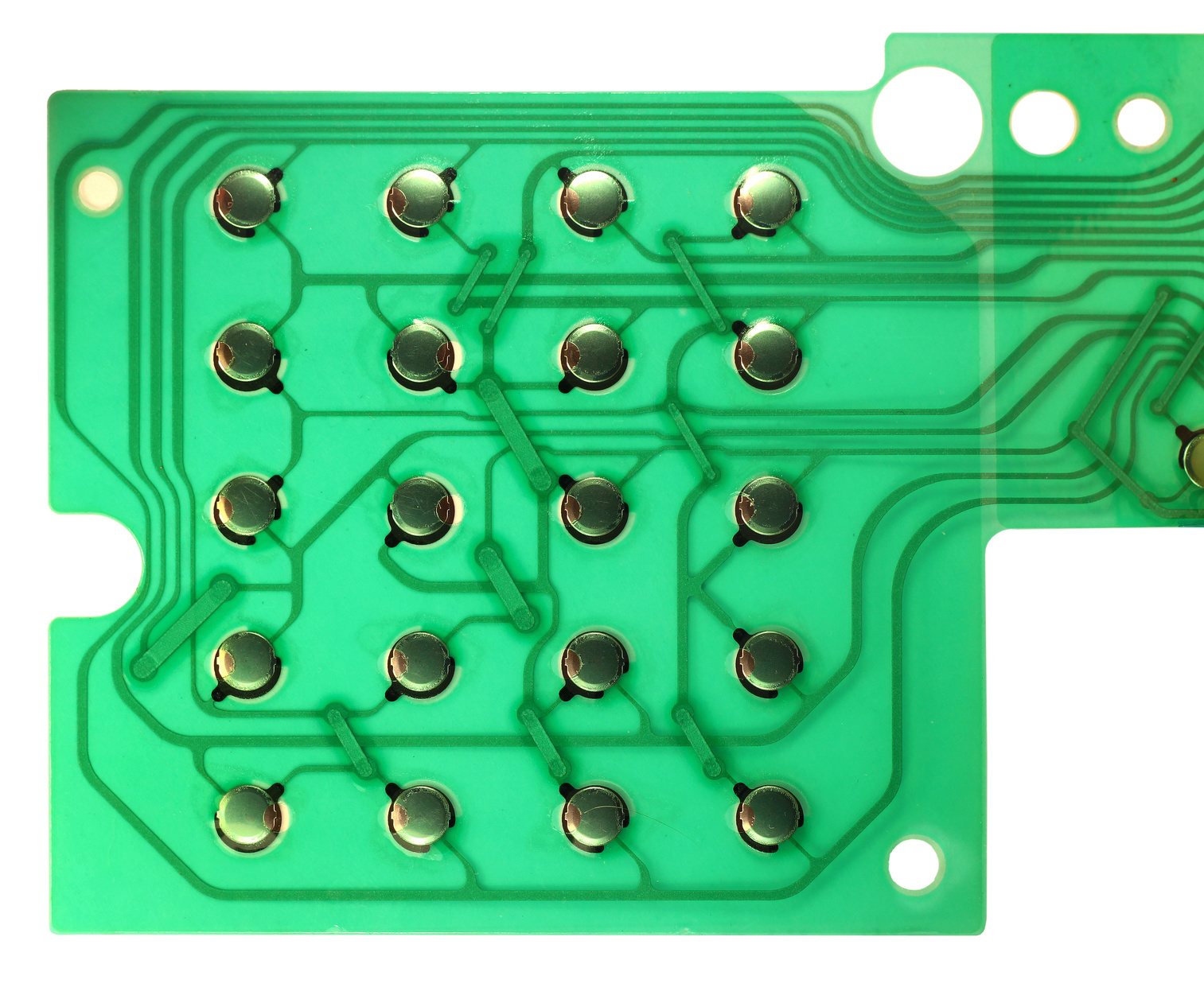Discover Exactly How a Membrane Switch Improves Durability and Capability in Instruments
Discover Exactly How a Membrane Switch Improves Durability and Capability in Instruments
Blog Article
Comprehending the Capability of Membrane Layer Switches Over for Interface Tools
The performance of membrane layer switches over stands for a considerable development in user interface layout, incorporating effectiveness with visual flexibility. These buttons run via a multi-layered framework that converts customer communications right into electric signals, enabling for both small layouts and durability against ecological factors. As sectors increasingly prioritize user experience, recognizing the nuances of membrane switch modern technology becomes crucial. What implications do these innovations hold for future applications, and how might they redefine user interactions throughout numerous tools?
What Are Membrane Layer Switches?
Membrane layer buttons are ingenious user interface devices that facilitate customer interaction with digital tools. These functional parts include several layers, including a graphic overlay, spacer, and a published circuit layer. The style enables a seamless combination into various digital gadgets, enhancing both the aesthetic and functional facets of interface.
Membrane buttons are frequently employed in a wide variety of applications, from household devices to commercial equipment and clinical tools. Their building generally includes a slim account, making them an excellent selection for small styles. The tactile feedback provided by these buttons can be crafted to satisfy particular individual choices, making sure efficient interaction between the user and the device.
Sturdiness is one more significant advantage of membrane buttons, as they are immune to dirt, moisture, and chemicals, which enhances their lifespan sought after settings. Additionally, these switches can be personalized in regards to form, dimension, and graphic layout, permitting for branding and user-specific attributes. In general, membrane layer switches over represent a functional service for boosting user experience in digital gadgets, combining capability with visual allure in a reliable way.
Exactly How Membrane Layer Switches Work
Operating on a simple principle, membrane layer changes use a layered building and construction to sign up user input properly. Each switch contains several layers, consisting of a published circuit layer, a spacer layer, and a leading graphic layer, which are designed to collaborate flawlessly. When an individual presses the top layer, it presses the spacer layer, bringing the conductive aspects of the circuit layer right into call with each various other.
This contact creates a closed circuit, indicating the tool to carry out a certain function. The design permits numerous setups, consisting of responsive feedback, which can improve the individual experience by offering a physical experience upon activation. The products used in membrane layer buttons commonly consist of adaptable substrates, such as polyester or polycarbonate, which make sure toughness and durability against wear and tear.

Secret Benefits of Membrane Buttons

Another substantial advantage is their compactness. Membrane switches are slim and light-weight, which allows suppliers to conserve space in their tools without this sacrificing capability. This function is particularly beneficial in applications where weight and volume are vital factors to consider.
In addition, membrane layer switches are resistant to dirt, wetness, and chemicals, improving their longevity. This resilience prolongs their lifespan and minimizes the demand for regular replacements, resulting in cost savings with time.
Furthermore, the responsive feedback offered by membrane layer buttons can be optimized to enhance individual interaction. They can include functions such as increased switches or audible clicks, improving use and customer experience.
Applications Across Industries
User user interface tools utilizing membrane switches are common in a broad range of industries, showcasing their flexibility and functionality. Membrane like it Switch. In the clinical field, membrane buttons are integral to gadgets such as analysis tools and individual tracking systems, where their longevity and convenience of cleansing are critical for keeping hygiene standards. Likewise, in the automotive industry, these switches are used in control panel controls and infomercial systems, providing a sleek and modern interface for customers.
Moreover, the customer electronics market advantages from membrane layer switches in devices and portable gadgets, where compact design and user-friendly user interfaces boost individual experience. Industrial applications likewise take advantage of membrane switches over for control panels in machinery and automation systems, highlighting their toughness and resistance to rough settings.
In the aerospace and defense sectors, membrane switches are utilized in cockpit controls and tools, where dependability and efficiency under severe problems are vital. In addition, the pc gaming market increasingly incorporates membrane buttons in controllers and arcade devices, contributing to an appealing customer experience. In general, the adaptability of membrane switches allows their extensive usage across countless markets, emphasizing their importance in modern-day customer interface style.
Future Patterns in Membrane Switch Innovation

In addition, the use of sophisticated products, such as polycarbonate and polyester films, is expected to climb, offering enhanced sturdiness and resistance to ecological stress factors. These materials add to the general durability of membrane layer buttons, making them suitable for harsher industrial applications.
Furthermore, useful link the incorporation of clever technology, consisting of IoT connectivity, will certainly enable membrane switches to connect with various other devices and systems, facilitating an extra interactive customer experience. This trend lines up with the expanding demand for clever devices throughout numerous sectors, from medical care to consumer electronics.
Finally, modification choices are prepared for to broaden, allowing makers to create bespoke options customized to specific customer needs and choices. These developments will place membrane layer buttons as necessary elements in the advancement of interface innovation.
Verdict
Finally, membrane layer switches over stand for a pivotal development in interface technology, supplying a reputable and functional remedy for varied digital applications. Their split construction assists in small layout, while attributes such as tactile feedback boost individual interaction. The resilience against environmental variables further solidifies their utility throughout numerous sectors. As developments in product science and touch sensing modern technologies proceed, the capability and applicability of membrane layer buttons are expected to expand, reinforcing their importance in modern-day electronic tools.
Report this page